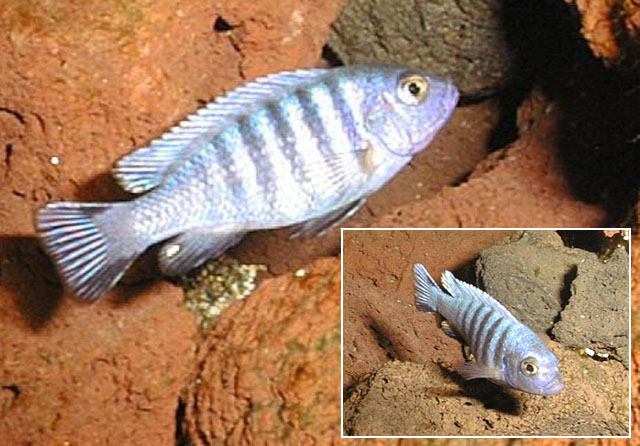| Cichlidae (Cichlids), subfamily: Pseudocrenilabrinae |
| 10.1 cm SL (male/unsexed) |
|
benthopelagic; freshwater; pH range: 8 - 8.5; dH range: 15; depth range 3 - 30 m, |
| Africa: Lake Malawi, indigenous to the central and northern parts of the Lake (Ref. 5622). |
|
Dorsal spines (total): 17-17; Dorsal soft rays (total): 8-9; Anal spines: 3-3; Anal soft rays: 6-7. Diagnosis: Body moderately elongated and of medium depth (Ref. 88848). Dorsal profile of body rounded; fronted profile straight; jaws isognathous; due to evisceration, body depth likely to be altered (Ref. 88848). Caudal peduncle lowering caudad, narrower point near the base of caudal fin (Ref. 88848).
Description: Teeth of outer jaw rows regularly spaced, large and caniniform, decreasing abruptly from symphysis to corner of lower jaw, more progressively on upper jaw; on lower jaw, two teeth on each side of the symphysis distinctly larger than other teeth; teeth in posterior rows clearly smaller and spaced (Ref. 88848).
Colouration: Body uniform, more or less dark brown, a spot on the end of the opercle and all the fins deep black (Ref. 52184, 88848). |
| Found common in the upper part of the rocky biotope which is usually sediment-free (Ref. 5595). Males which are territorial mainly feed from the biocover on the rocks close to their homestead while others which are more gregarious feed on plankton (Ref. 5595). |
|
Least Concern (LC); Date assessed: 22 June 2018 Ref. (130435)
|
| harmless |
|
Source and more info: www.fishbase.org. For personal, classroom, and other internal use only. Not for publication.

